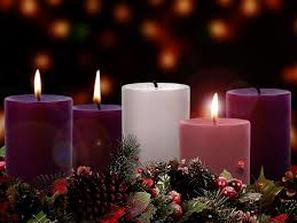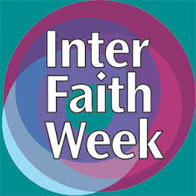
One of the things that exercises many Christians is how to focus on the religious meaning of Christmas and not get too caught up in the razzmatazz and commercialism of it all. Many will give simple presents or even make donations to some charity and decry the materialism. While I have a lot of sympathy with this I actually quite like the commercialism and the sense of festival around – though admitting that to purists can be quite difficult sometimes. I like the lights and the glitter and I find it strangely moving to overhear people on their phones asking advice about what so and so would like as a gift. There’s a lot of love around even though I’m keenly aware of others who’re not so fortunate and for whom the whole family atmosphere intensifies their lack of family, friends, home, shelter, safety or whatever. It’s good to remember this side of Christmas or any family festival in any religion, for that matter. Not only does it give an opportunity to show hospitality to others but it gives a balance to our own celebrations – let’s not go over the top.
The problem with the disassociation of Christmas from religion is that people, who either don’t know or have forgotten Christmas’ real meaning, can go over the top and they’re encouraged in this by all the advertising that goes on – some of it obviously costly. A favourite advert from what I can gather is John Lewis’. I’ve heard people comment on how good it is this year – the best ever I heard someone say. I’ve now seen it and it’s good in that it’s about animals (always popular for adverts) enjoying a trampoline set up as a gift for the daughter of the family. But it’s been trumped (!), if I can use that word to mean outdone, by Amazon Prime’s advert. This shows a vicar and an imam enjoying a cup of tea over a friendly chat and, being of a certain age, finding it difficult to rise from their chairs when it’s time to go. The upshot is each buys the other an identical present - some kind of knee support – bought of course on Amazon and sent by Amazon Prime. The last scene is each of them on their knees in prayer, helped by the gift from the other. It’s a great message of interfaith friendship in spite of the commercial overtones. I’d love to know who designed it. It’s now a hit on social media and I saw a comment which asked ‘is this for real? Well, yes it is. Interfaith friends might not be buying one another identical presents but they are sharing time and tea with one another. They can hardly go to prayer without thinking of one another. For anyone who doubts this, information about the many events that took place across the country last week during interfaith week shows that interfaith is alive and well. It’s bubbling away in unexpected places and witnessing to the many ways in which people of faith are united in their humanity, respecting diversity and building bridges across traditional divides.
What I like about the advert is that the interfaith dimension is just taken for granted – yes, used for a commercial enterprise but a good understated image which I think will get into people’s psyches. It’s a good example of how the media can communicate good news. In Scotland the theme for interfaith week was religion and the media. There were many events around the theme, some of the media took up the challenge and wrote articles about it or included it in magazine programmes. What tended to come over was how ready the media is to publicise bad religious stories and ignore the good stories. BBC Scotland even had its own event – Meet the Producers. It’s important to have religious programmes and the BBC has announced it’s going to make sure that minority faiths have more coverage – to the consternation of those who think a public media should be secular. What I’d like, however, is the integration of religion, religious values, religious ideals into programmes dealing with social issues – even into ‘Soaps’. There tends to be a custom of talking to religious people when there is a religious issue in the news or some islamophobic or anti-Semitic incident. Programmes such as this put religion into a box and separate it from ordinary life. What would be nice is to include some religious vision, teaching and scripture into discussions on social issues such as the environment to show that there is a wisdom in religion that has a message for all. I know that many secularists would agree with some of this teaching if they didn’t identify it with a religious system they were prejudiced against. What would be nice is to include religious people in dramas who are normal and not caricatures of the worst of narrow-minded, out of touch, old fashioned kind of people. Why should it not be shown that religious people struggle with the same kind of issues as do those who are not religious and that religion and the support of a religious community can in fact be supportive and meaningful. This could be much more challenging than a programme focussed on religion and witness to the reality of religion in people’s lives, much like the Amazon Prime advert which gets my vote for the best Christmas advert ever.




 RSS Feed
RSS Feed
